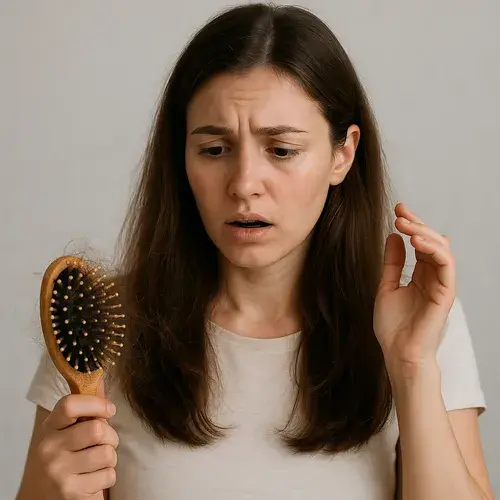Seasonal Hair Shedding: What's Normal? Understanding Temporary Hair Loss Cycles
Seasonal hair shedding, common in spring and fall, is a natural, temporary response to environmental changes. Learn its causes and effective ways to manage and protect your hair.

Seasonal hair shedding is a common phenomenon that many people experience, particularly during the spring and fall. While it can be alarming to notice more hair falling out than usual, it is generally a temporary and natural response to environmental changes. In this article, we will delve into what seasonal hair shedding is, its causes, and how to manage it. What is Seasonal Hair Shedding? Seasonal hair shedding refers to the increased loss of hair that occurs at different times of the year. This phenomenon is closely tied to the natural cycle of hair growth, which consists of three main phases: the anagen phase (growth), the catagen phase (transitional), and the telogen phase (resting). The exogen phase is when the hair actually falls out, marking the end of one cycle and the beginning of another. During seasonal changes, more hair follicles may enter the telogen phase, leading to an increase in shedding. This condition is often referred to as telogen effluvium, which can be triggered by various factors including stress, illness, hormonal fluctuations, and environmental changes. When Does Seasonal Hair Shedding Occur? Seasonal hair shedding typically peaks during the fall and spring. In the fall, around September to November, hair follicles that entered the telogen phase during the summer begin to shed. This is often noticeable as the weather cools down and becomes more humid, leading to increased hair breakage. Similarly, in the spring, around March and April, the follicles that entered the telogen phase during winter are shed. What Causes Seasonal Hair Loss? Seasonal hair loss is primarily a temporary condition influenced by environmental changes. Common factors include shifts in daylight, temperature fluctuations, exposure to UV radiation, and changes in humidity. These factors can disrupt the normal hair growth cycle, causing more hair follicles to enter the resting phase. In addition to environmental factors, dietary changes, stress levels, vitamin deficiencies, and alterations in overall health can also contribute to seasonal hair shedding. For instance, springtime allergies can cause inflammation and itching on the scalp, leading to hair loss problems. Nutritional deficiencies or changes in diet can also impact hair health. Managing Seasonal Hair Shedding While seasonal hair shedding is generally not a cause for concern, there are steps you can take to manage it: Maintain a Balanced Diet: Ensure you are getting all the necessary nutrients for healthy hair growth. Foods rich in vitamins A, C, E, and B, as well as minerals like zinc and iron, are particularly beneficial. Reduce Stress: High levels of stress can exacerbate telogen effluvium. Engage in stress-reducing activities such as meditation, yoga, or deep breathing exercises. Protect Your Scalp: Use gentle shampoos and conditioners suitable for your hair type. Avoid harsh chemicals that can damage your hair and scalp. Stay Hydrated: Adequate hydration is crucial for maintaining healthy hair. Drink plenty of water throughout the day. Consider Supplements: If you suspect a nutritional deficiency might be contributing to your hair loss, consider consulting with a healthcare professional about taking supplements. Protect Your Hair from Environmental Factors: Use a hat or sunscreen when going outdoors to protect your hair from UV radiation. Get Regular Trims: Regular trims can help prevent split ends and breakage, which can make your hair appear healthier even during periods of increased shedding. By understanding the causes and natural cycles of seasonal hair shedding, you can better manage this temporary condition and maintain healthy-looking hair throughout the year.
Need Professional Consultation?
Our professional doctors will provide detailed hair and scalp analysis and develop personalized treatment plans.
Book Consultation Now